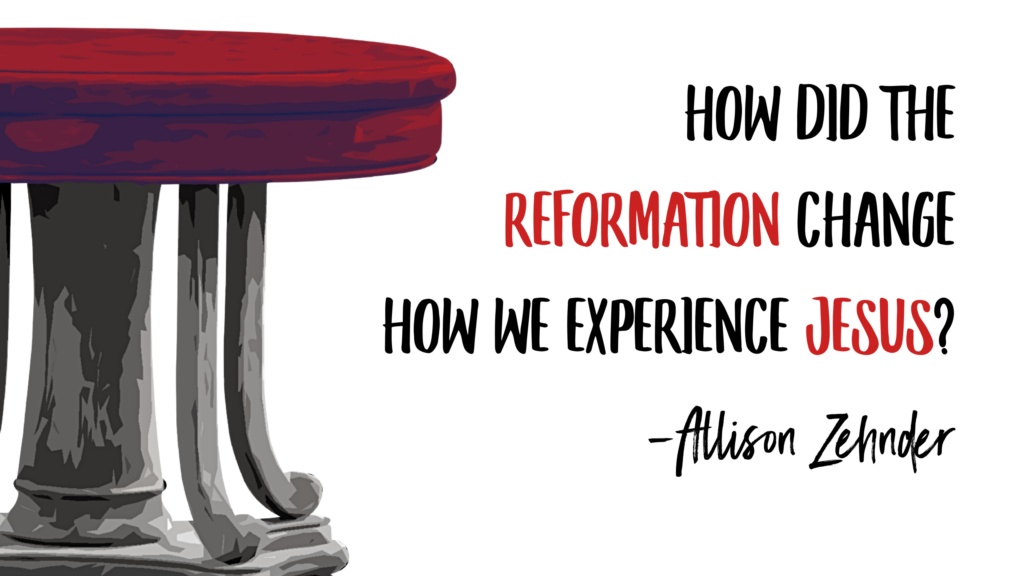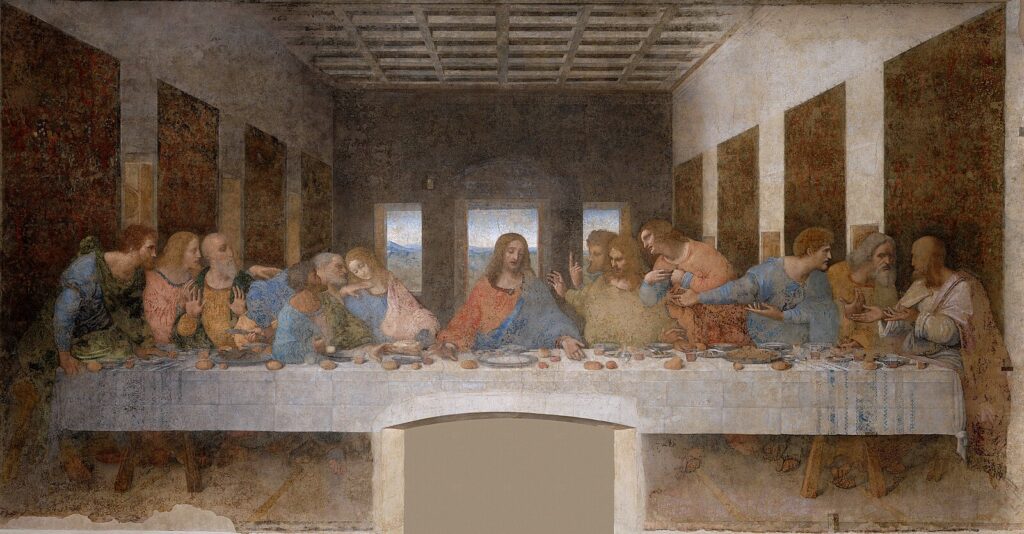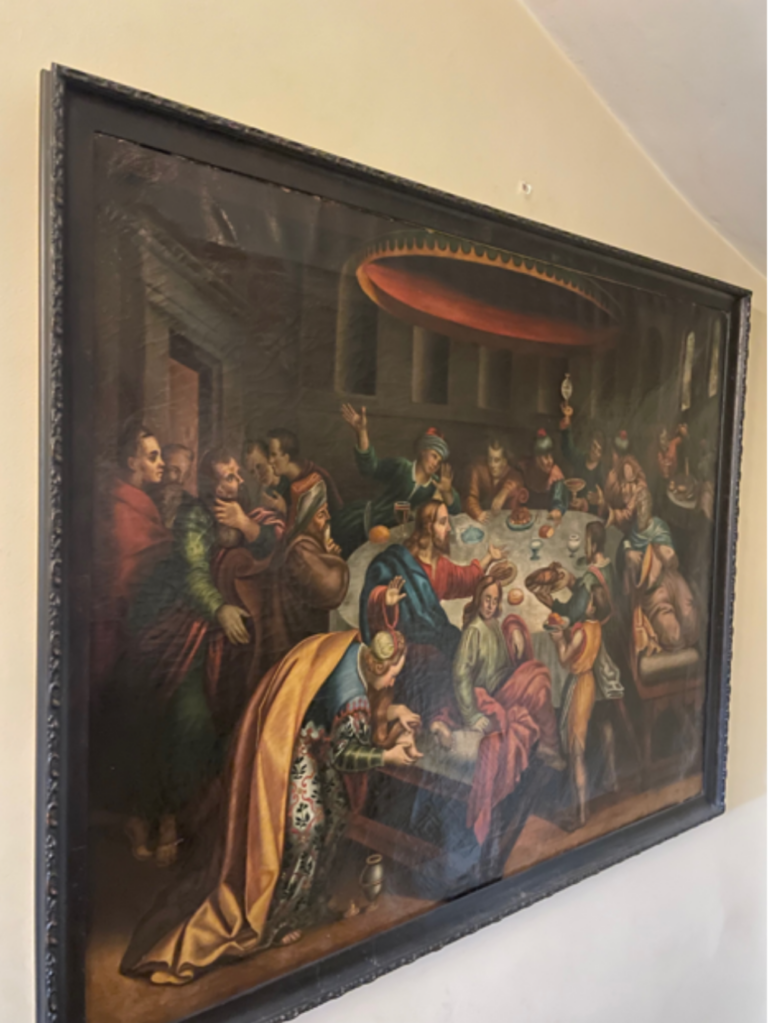

When things go awry, God finds a way to get them back in order. When Martin Luther challenged the Catholic Church, he started a flame that changed much of history. The Reformation gets a lot of credit for ushering in change in our world.
These and other changes trace back to 1517 when Martin Luther nailed the 95 Theses on the wall of the Augsburg Chapel and began making radical changes in the church.
And you thought October 31st was all about candy!!!
The arts are a great thermometer for us to examine the impact of the Reformation. Back then, people were mainly illiterate. Why did they need to read and write anyway? There were no books to read. The arts reflected what was happening in people’s hearts and homes before and during the Reformation.
Before things got shaken up, all artists worked for the church. The church, after all, had all the power and money. If you wanted to make a living, you had to work for the church. This was less about the beliefs of the artists and more about who held the purse strings. After all, only the church could afford the expensive commissions. So, most paintings would be of religious scenes. And the artwork was kept inside the church, along with God.
The priests also used the artwork as part of people’s penance. They used it to control people. It created an idealistic view of faith and God and showed the great chasm between the common everyday person and God. So, if you wanted to encounter God, the grand cathedrals were the place to be. (Just scrape off the mud before you come in!)
After the Reformation, God was no longer confined to grand religious buildings. When the church doors were finally opened, people began taking their faith into their work and home life. They still honored God, but their relationship with Him expanded beyond the church and into their own little worlds.
But what about the artists?
With the church powers shaken up, and a lot of their power gone, artists had to find new ways to make a living. Martin Luther was a big proponent of art. He championed it, showing the value of religious art in teaching stories of the Bible. Artists began painting nature, still life, and portraits. They used their gifts and abilities to express their faith through God’s creation. In a world that was still largely illiterate, the art found an important teaching role. As faith became more personal, so did the paintings. One example of this was how artists drew the Last Supper before and after the Reformation.
Almost every depiction of the Last Supper before the Reformation looked the same way. A row of men sat on one side of a rectangular table (opposite from the viewer, and this was intentional. After all, they were VIPs!) The disciples usually had some halo or light, except for Judas. Jesus was always in the middle and separate from the other disciples. Sometimes, He had a different color halo. Sometimes, there was space between Him and those around Him. Other times, He was taller than the others. A famous example of this is Leonardo Da Vinci’s famous Last Supper.
As you look at it below, ask yourself the following questions:

As we said, after the Reformation, faith got a lot more personal. And so did the art. Below you’ll see another painting of the Last Supper. But this one was done after the Reformation. What differences do you notice between Da Vinci’s painting and this one?

First, hierarchy is gone. The table’s round shape gives everyone an equal spot at the table. Notice how Jesus shares His bench with a child. Seating arrangements are not in a hierarchical row, with the most important in the middle. Everyone gathers in.
Second, women and children are present. Everyday items are present. There’s no need for a grand show or getting out the fine china and “dressing for dinner.” It’s a come-as-you-are experience. Those gathered around the table are dressed in a variety of ways and have a variety of expressions. You won’t find any halos here, not even on Jesus.
Lastly, this event is not just about the supper and those at the table. (Not to diminish the importance of that event, but to remove the distance.) Jesus isn’t only focused on what’s happening at the table. He’s got one hand at the table, but His second one is gesturing behind Him. He’s reaching for the lost outside of the inner circle. He’s going to the woman washing His feet. Jesus’s religion is not one of elitism. He cares deeply for people. He’s there with the believers, but He’s halfway facing the lost, those not there from the table.
This isn’t supposed to be a snapshot of what was actually happening on that Last Supper. Rather, it’s a depiction of an attitude about who Jesus was, a loving relational being, that was so different from the far-reaching, holier-than-thou depictions of previous centuries.
Like everyone sitting on one side of the table, the church can slip into an “us versus them” mentality. Christians stand safely on one side, posting Christian memes and checking in to church on Sundays. We can sit comfortably in our church chairs and greet others, but choose not to spend time with non-believers. We may give to the church, but not until it hurts. We’d rather not sacrifice our lifestyle.
Notice how the disciples sat off Jesus’s side. As a church body, we also keep Jesus at a distance. If He gets too close, He may start ordering us around or telling us what to do. Heaven forbid that happens. It’s comfortable to keep Jesus at our disposal but we still like having our space, too. We need our freedom. Don’t tell us what to work on or where we fall short.
Finally, like the neat and tiny table in the painting with no outside people or realism, our churches can seem too ordered. We don’t want realism. We have strict timing and don’t try to mix up our service orders.
We’ve looked outside the church doors. The real world brings poverty, addictions, broken relationships, bad parenting, and noise. So, without realizing it, we shut the door on those things. Let’s keep our churches clean, neat, and other-worldly.
But that’s never the table that Jesus invited us to.
We are all invited to a “round table” relationship with Jesus. But that round table has flawed people at it. Children are noisy and make messes at Jesus’s table. People different from you sit at this table. They express their ideas, dress differently, and don’t always follow proper table manners. The people who serve you also sit at the table. They aren’t banished away to eat downstairs. Jesus invites all to the table.
Sitting at the round table requires humility. It requires you to serve to step outside your comfort zone. To talk to someone you would not normally associate with. To give up being always comfortable so that someone else can be helped. It’s an invitation to a community that is open and honest about our faults. Round table communities require us to spend our good times together and depend on each other in the bad.
He loves those in the church and those at the table, but He has an arm out to the lost. And He wants you to do the same. It will be messy, but it will be casual, crowded, inviting, and fun! And, most of all, it is worth it.
If I had to pick, I hope the final Passover meal Jesus shared with His disciples was more like the second painting. It’s casual, crowded, inviting, and messy. (It reminds me more of a rowdy family reunion than the famous Last Supper!) And that is exactly who Jesus was, is, and forever will be.
So, have fun trick or treating. I hope you can get as much candy as your heart desires. But, may you know, far better than any piece of candy you might receive, is the grace of Jesus offered to you through His Son Jesus Christ! All are welcome. Come sit around the table.

4 Responses
So thankful for the work of the Spirit in the Reformation! Our real reason to celebrate today!
What is the name of the round table last supper painting and who was the painter?
What is the name of the round table Last Supper painting and the name of the painter?
Hey Kim! Thanks for the question! This is Allison Z. This is a picture I took of a painting at a house museum, Belvedere Mansion, in Galena, IL. Its title and artist name are unknown. It was given in exchange for tuition to Lawrence College in Dubuque, IA, and it is now on loan from them to the house museum. I spoke to the museum curator, who said I could use it and did not need to reference it!